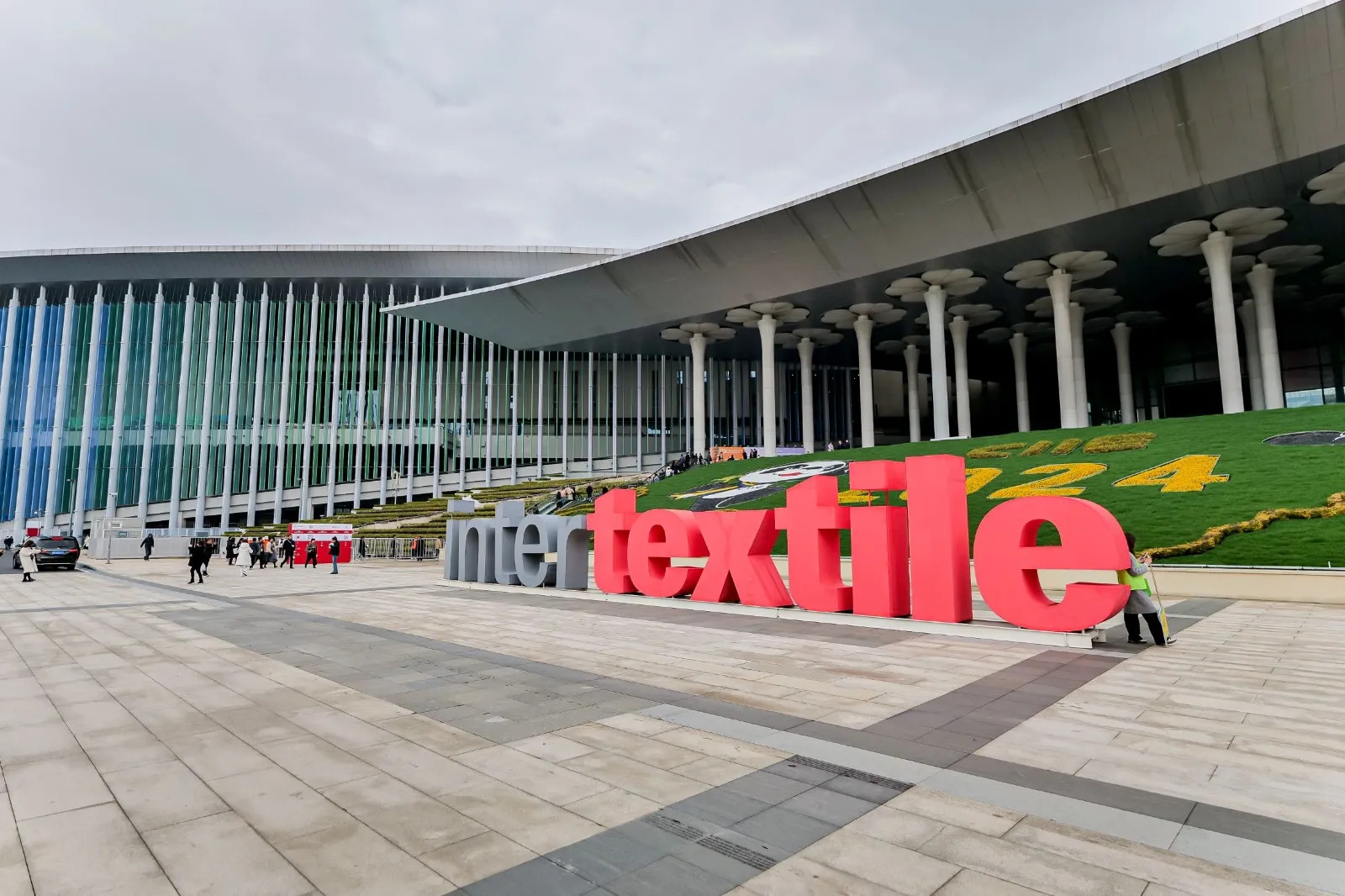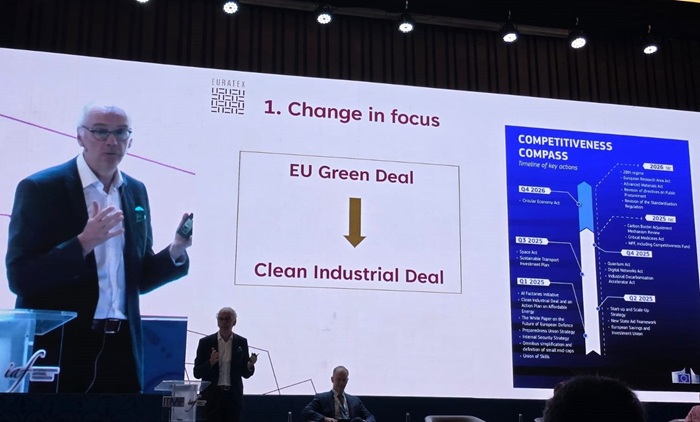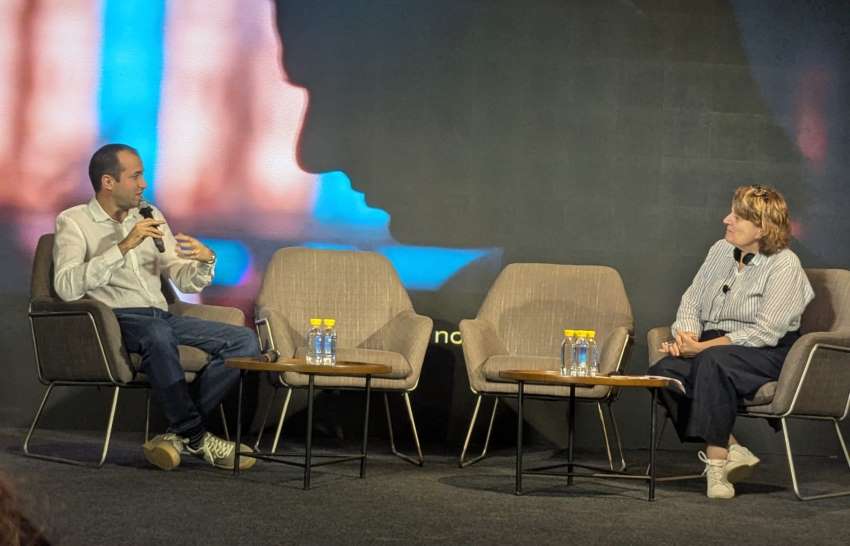FW
To remain competitive, the government of Indonesia has decided to continue to make efforts to strengthen and improve the textile industry and products. Strengthening the textile industry is important to increase the nation’s exports.
The business of textiles and textile products was hampered by smuggling or illegal imports in some parts of Indonesia but the government is set to take firm action against activities that hinder the growth of local manufacturing. Talking on this, the country’s finance minister Mulyani Indrawati has said she would act against illegal imports of textile and textile products and importers who have been misusing the facilities provided by the customs and excise department.
The minister said she would invite relevant ministries and institutions to review the rules on textile imports that are still conflicting, overlapping and incompatible with the needs of society, trade and industry. Currently, textile manufacturing is a labor-intensive and creates jobs in the distribution and trade sector.
Indonesia’s export statistics in 2016 showed textile contributed 9.61 per cent of total export value for non oil and gas products, or the second highest after palm oil exports.
"Global home furnisher IKEA has released its sustainability report for FY-16 in where it commits to invest €1bn in sustainability initiatives in the coming 12 months. The company says it continues to source most cotton from sustainable sources, namely Better Cotton Initiative (82 per cent) and uses recycled cotton (18 per cent) for the rest."

Global home furnisher IKEA has released its sustainability report for FY-16 in where it commits to invest €1bn in sustainability initiatives in the coming 12 months. The company says it continues to source most cotton from sustainable sources, namely Better Cotton Initiative (82 per cent) and uses recycled cotton (18 per cent) for the rest.
The report also shows progress in its People & Planet Positive strategy including its target to produce as much renewable energy as the energy it consumes in its operations by 2020. IKEA has announced that new wind farms in Poland and the US will become operational in the next 12 months. The IKEA Group produced renewable energy corresponding to 71 per cent of its energy use in FY16.

Peter Agnefjäll, President and CEO, IKEA Group observed that there are many opportunities ahead for forward - thinking businesses to contribute and benefit from the development of the low-carbon economy. Guided by the IKEA vision, to create a better everyday life for the many people, the company is determined to have a positive impact on people and the planet.
Steve Howard, Chief Sustainability Officer, IKEA Group adds IKEA has made significant progress towards its People & Planet targets, but there is still more to do. The company wants to lead with passion and purpose towards a more sustainable and equal world. On cotton sourcing, the report goes on to say that people at IKEA love to work with cotton. In FY16, the company used 130,000 tons for its bed linen, towels, furniture covers and more. That amounts to around 1 per cent of the world's cotton supply. But the company is uncomfortable with the fact that conventional cotton production can have a negative environmental impact and may be harmful for cotton farmers and their families.
That is the reason why the company commits to sourcing all its cotton from sustainable sources and is also working to improve conditions in the cotton supply chain. Organisations like BCI support farmers to improve yield and income enabling them to break the cycle of poverty.
In a controversial report, Green MEPs has accused Zara and its parent company Inditex of employing fiscal optimisation measures to avoid paying over €500 million in tax. The report was disputed by the Spanish apparel group. In its 36-page report, Green MEPs gave details of what they claim are the group's ‘aggressive tax avoidance strategies’. Zara is allegedly benefiting from low levels of corporate taxation in countries like the Netherlands, Ireland and Switzerland. On the contrary Inditex said that the report is based on mistaken premises which lead to false conclusions. The response of Zara came in a press release.
Inditex is the third group Green MEPs that has set its sights on malpractises. Last February, it pointed its finger at Swedish furniture giant Ikea and in early November at German chemicals group BASF for their fiscal trickery. Both groups have disputed the accusations.
Seven industrial units in Bangladesh have ranked among the top 10 in a list of the world's 25 most environment-friendly factories. Until recently, the country's readymade garment (RMG) sector had been highly criticised by numerous quarters of the international community before coming under government scrutiny.
However, the Leadership in Energy and Environmental Design (LEED) certificate awarded by the US Green Building Council, a Washington-based NGO, is a testimony to Bangladesh's success in ensuring maximum environmental safety of its workplaces. The list includes: Remi Holdings, the RMG factory in Adamjee Export Processing Zone (EPZ) of Narayanganj district became the number one environment-friendly factory in the world. Narayanganj's Plummy Fashions turned out to be the runners-up.
The country's other industrial units that made it to the list include Vintage Denim (owned by ABA Group), SQ Celsius 2, Genesis Washing, SQ ColBlanc and SQ Birichina. Owners, mangers, employees and workers along with all active stakeholders of these factories deserve applause for their extraordinary achievements. Undoubtedly, their collective effort has lead to a sterling success in protecting the workplace environment, setting an example for others to follow.
According to Bangladesh Garment Manufacturers and Exporters Association (BGMEA), amid a tight scrutiny from the government, most of the Bangladeshi RMG factories now provide for a tolerable workplace environment with adequate humanitarian facilities for workers and staff. Evidently, the US government has lost its justification before declining to grant any GSP facility to the Bangladeshi RMG companies.

The fashion industry is always on the lookout for the latest technologies to maximise efficiency in production. Every day, new techniques are discovered and tested to address issues such as sustainability and the future of apparel related processes. While 3D printing is nothing new in the fashion world, the vast majority of designers have yet to explore the techy side of the industry.

Perhaps the notion that couture could be printed from a machine throws some people off. But several designers have already dispelled any theories or misconceptions there might be on the subject, successfully adopting the technology and adding printers into their workrooms. One such designer is Iris van Herpen. Never one to go with the flow, the Dutch innovator was one of the first to use a 3D printer for her clothes, transforming her Amsterdam studio into something resembling a laboratory to bring her ideas to life. Contemporary dresses come in all silhouettes, fabrics and lengths, as shown in the cutting-edge frock collection on Lyst that showcases styles for every occasion, though none quite compare to her silicone-made “dragon skin,” form-fitted and lined with cotton and silk. Van Herpen’s creations earned her a spot in the coveted Metropolitan Museum of Art in New York, in a previous exhibition known as Manus x Machina: Fashion in an Age of Technology.
Someone else who has shown a vested interest in this sort of wearable tech is Israeli designer Noa Raviv, a former student at the Shenkar College of Engineering and Design. Fascinated by the broken patterns produced by computers that don’t understand the inputted code, Raviv used that as a basis for the theme of her latest collection—tension between order and chaos. Her newest range is characterised by the looping lines and patterns incorporating Swarovski crystals.
Unlike van Herpen, her company only consists of one other person and is on the lookout for another, proving that you don’t need a large team of scientists to work the machines. With no factories manufacturing her clothes, together with the “mistake prints” that lay the foundation of her items, the dresses she currently retails in LA boutique H. Lorenzo are 100 percent unique.
Because of the amount of time and dedication each piece takes, 3D printing will most likely remain a practice only seen in the luxury fashion industry for the time being, although we never know what we have in store for the future.
"If you are offering good quality product at a reasonable price, then nothing can beat you in business. That has been proved by Kikani Exports time and again. Exporting yarns to Chinese companies for last 12 years, the company has understood the pulse of its customers well. Agreeing with the fact that exporting yarn to China is both a massive opportunity and a tremendous challenge, the company has been reaping fruits of hard work. Vrajesh Kikani, MD, Kikani Exports, says “The biggest difference between China and other export markets is the volume of business available."
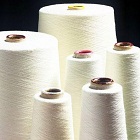
If you are offering good quality product at a reasonable price, then nothing can beat you in business. That has been proved by Kikani Exports time and again. Exporting yarns to Chinese companies for last 12 years, the company has understood the pulse of its customers well. Agreeing with the fact that exporting yarn to China is both a massive opportunity and a tremendous challenge, the company has been reaping fruits of hard work. Vrajesh Kikani, MD, Kikani Exports, says “The biggest difference between China and other export markets is the volume of business available. In China, the volumes are huge. The company started exporting to China in 2004, with about 60 tonne per month. That increased over time to as much as 4,000 tonne per month by 2014 but in the past year, the market, owing to cautious market conditions, the volume has gone down to a level of around 2,000 tonne.”
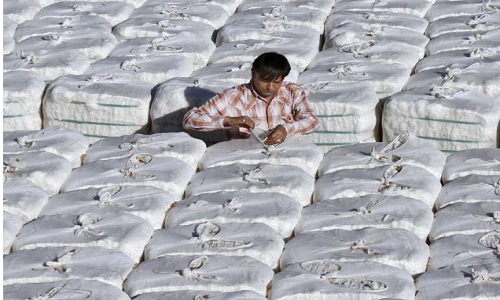
Amid this volatility, China remains a crucial customer for Kikani and other suppliers from India, together withBangladesh representing about 60 per cent of total exports in some cases. He thinks the domestic market cannot take the big volume of Indian spinning mills and the industry, especially cotton spinning is an important industry which employs a lot of people. So, Indian companies need to be dependent on China for their growth.
Quality conscious company
Kikani’s experience in yarn trading has given them an upper hand in the competitive Chinese market. Quality management top of the list and it begins with sourcing the right yarns at the right price from reliable spinners along with the adoption of latest technology and process control. The company has a fully-equipped testing laboratory, with latest USTER technology for fibre and yarn quality assurance. The company trains staff regularly on the latest upgrades into the machinery to achieve the desired output.
Expansion process
Kikani recently invested in its own spinning mill to extend the options beyond its yarn trading business. The new mill, in Ahmedabad, started in 2015, expanding to 29,376 spindles and 4,320 TFO drums by the end of the year. Attractive incentives from state government helped the investment decision. The company’s in-house yarn production is combined with yarns from known and trusted spinners in India. A special advantage for knitting yarn is Kikani’s focus on Shankar 6, which is said to have the lowest contamination rate of the entire Indian crop – although still high compared with cottons from the USA or Australia.
Contamination is a serious issue and although it is generally ‘expected’ by spinners and their customers, there is a constant and growing need to monitor and control it. Kikani achieves this in its own spinning mill with a combination of latest USTER® JOSSI MAGIC EYE detection in the blow room and USTER® QUANTUM 3 (PP option) clearers on its winders. But contamination remains an inherent problem with Indian cotton, because of the typical farming practices in the cotton fields.
Kikani sells to major trading houses in China, and individual weaving and knitting companies and yarn dyers. Although the Chinese export business is large and important to Kikani, it is not usually as lucrative as sales in the domestic market, where prices are generally higher. However, the China trade offers greater volumes, and is mainly financed through letters of credit (LCs), which provides quicker payments compared to locally-negotiated deals with Indian customers.
Tough ride ahead…
Going ahead, Kikani expects market conditions to be more volatile, thereby majorly impacting business with China. Also because of increasing competition from Vietnam and other countries, the company feels it may be a dampener for Indian companies. Hence, unless Indian suppliers are extremely competitive, yarn sales to China will be an even greater challenge in the days to come.
US outdoor apparel maker Timberland has released its Q3 2016 Corporate Social Responsibility (CSR) performance data. The figures have been broken down by the three CSR goals of product, outdoors, and community. The data shows that in Q3, 69 per cent of all cotton used in Timberland apparel was either organic, of US-origin or Better Cotton Initiative certified.
Meanwhile, Timberland's average use of volatile organic compounds was 54 grams per pair of shoes while 91.6 per cent of Timberland's overall leather volume came from tanneries that have a Silver or Gold rating by the Leather Working Group, a multi-stakeholder group, comprising of brands, retailers, leather manufacturers, chemical companies and other relevant parties in the leather supply chain with the goal of raising the environmental performance of the leather industry.
Timberland sourced from 349 factories in Q3. In terms of outdoors, Timberland has aligned future targets with the goals of its parent company VF Corporation around energy reduction and renewable energy.
Timberland has set itself a number of other ambitious sustainability targets which it aims to achieve by 2020. These include having 100 per cent of footwear including at least one material containing recycled, organic or renewable (ROR) content; to have 100 per cent of footwear and outerwear leather sourced from tanneries that have earned a Gold or Silver rating from the Leather Working Group; for 100 per cent of apparel cotton to come from organic, US-origin or Better Cotton Initiative–certified sources; and for 100 per cent of footwear and apparel to be PVC-free.
Myanmar has a long way to go for its garment industry to be sustainable. Factory workers, most of whom are women, bear the brunt of an extremely competitive global market in which labor standards remain below internationally recognised human rights and labor standards.
About 95 per cent of workers are on the job six days a week while 88 per cent work 10 or more hours a day. Most face disproportionate wage deductions for taking days off. Trade unions exist in just a third of the factories while just eight per cent of the workers are members of a trade union. Even after the introduction of the minimum wage policy, two thirds of workers say working conditions have become harsher both in terms of expected worker output and strict regulations.
It’s clear that further systemic changes are needed for a more sustainable fashion future. In this context brands like H&M are taking the lead in bringing all the relevant actors together to get closer to making functional industrial relations and collective bargaining a reality in the fashion supply chain.
However the garment industry in Myanmar, while still small compared to major producers such as China and Bangladesh, is growing exponentially, as more and more buyers source from the over 350 factories in its industrial zones.
Telangana will open 12 new textile clusters. This is part of a move to encourage handlooms and support weavers. A textile policy will contain several welfare measures for weavers' benefit. Handloom workers in the parks will be provided health insurance and pension facilities.
Handloom products will be provided outlets. Weavers would be empowered through enhanced marketing opportunities and better incomes. For speedy revival of the handloom industry, and for giving a boost to the workers, the budget would allot special funds. Workers who are dependent on power looms for livelihood have been granted a loan waiver.
Public representatives and officials will be urged to wear handloom clothes at least once a week. Online sales of handloom clothes have already taken off and these would be taken to all e-commerce websites.
Telangana is one of the important states in the handloom industry. There are about 82,435 handloom weavers in the cooperative fold and 32,002 outside the cooperative fold. The handloom industry in Telangana is known for pochampally ikats, gadwala cotton, silk and sico saris, Narayanpet cotton, men’s shirts, silk saris, dress materials, stoles, Warangal durries, Karimnagar bed sheets and furnishings. The Telangana State Handloom Weavers Cooperative Society was established in 2016.
For over 60 years, Leister has been the global market leader for welding thermoplastic polymers and hot-air modules for industrial process heat applications. Leister is working on a laser seam welder, especially for garment manufacturing, which can be used almost like a normal sewing machine.
The company is conducting a field study. The aim is to figure out if the end customer is satisfied with laser welded seams and to prove the skin friendliness and durability of laser seams. In the study, subjects wear laser welded sports bras when involved in physical activities such as playing handball, running and attending fitness classes. Participants prefer the comfort of laser welded apparel in comparison to sewn apparel.
Laser welding itself is a brand new technology not currently employed in the industrial production of garment manufacturing. Some of the potential benefits of laser textile welding include flat, elastic and skin-friendly seams. Through the use of laser welding it’s possible to achieve a seamless effect and the outside of the fabric is not harmed at all. Laser seams are smooth and gentle; therefore it is best for clothing that comes in direct contact with the skin as there is no irritation.



